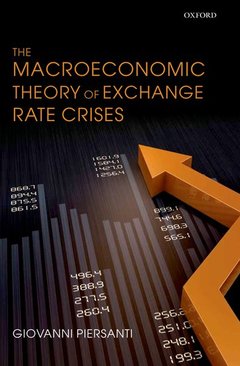Description
The Macroeconomic Theory of Exchange Rate Crises
Author: Piersanti Giovanni
Language: English
Subjects for The Macroeconomic Theory of Exchange Rate Crises:
Publication date: 04-2012
408 p. · 16.3x24.1 cm · Hardback
408 p. · 16.3x24.1 cm · Hardback
Description
/li>Contents
/li>Biography
/li>
This book deals with the genesis and dynamics of exchange rate crises in fixed or managed exchange rate systems. It provides a comprehensive treatment of the existing theories of exchange rate crises and of financial market runs. It aims to provide a survey of both the theoretical literature on international financial crises and a systematic treatment of the analytical models. It analyzes a series of macroeconomic models and demonstrates their properties and conclusions, including comparative statics and dynamic behaviour. The models cover the range of phenomena exhibited in modern crises experienced in countries with fixed or managed exchange rate systems. Among the topics covered, beyond currency sustainability, are bank runs, the interaction between bank solvency and currency stability, capital flows and borrowing constraints, uncertainty about government policies, asymmetric information and herding behaviour, contagion across markets and countries, financial markets and asset price bubbles, strategic interaction among agents and equilibrium selection, the dynamics of speculative attacks and of financial crashes in international capital markets. The book is intended for econometricians, academics, policymakers and specialists in the field, and postgraduate students in economics.
Preface. Introduction. Part I: The Monetary Model under Flexible Exchange Rates. 1. The Basic Monetary Model of the Exchange Rate. Part II: Fixed Exchange-Rate Regimes and Currency Crises. 2. Crises and Policy Imbalances. 3. Crises and Self-Fulfilling Expectations. 4. Dynamics of Crises. 5. Epilogue. Mathematical Appendix. Introduction. A.1. Basic Properties of Ordinary Differential Equations. A.2. Basic Properties of Ordinary Difference Equations. A.3. Nonlinear Dynamics, Bifurcation and Chaos. A.4. Dynamic Optimization. A.5. Stochastic Equations.
Prior to joining the University of Teramo Giovanni Piersanti was Associate Professor of Economics at the University of Chieti. His research interests include economic theory and stabilization policy; monetary economics; growth theory; macroeconomic models of intertemporal optimization; macroeconometric models with rational expectations; and currency and financial crises.
© 2024 LAVOISIER S.A.S.




